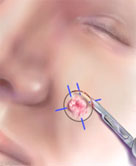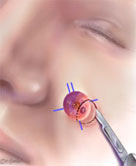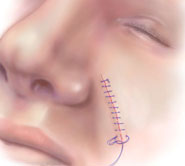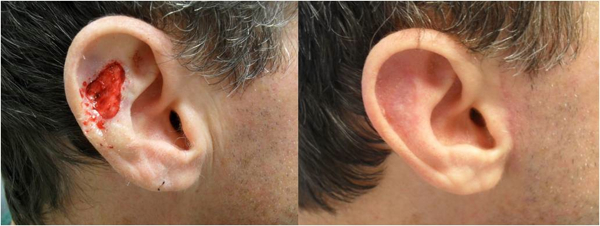Services
- General, Surgical & Pediatric Dermatology
- Skin Cancer
- Mohs Micrographic Surgery
- Laser Treatments
- Facial Rejuvenation & Chemical Peels
- Botox / Dysport Neuromodulators
- Restylane/Fillers
- Unwanted Pigmentation, Age Spots & Melasma
- Skin Care Regimens
- Clinical Handouts
- Prescription Cost Counseling
- Telemedicine
Mohs Micrographic Surgery
What is Mohs Surgery?
 |
 |
 |
Mohs is a highly specialized treatment for the total removal of skin cancer. Mohs surgery is done as an outpatient procedure with local anesthesia, and there is no need to be “put to sleep.” We perform the treatment in our office, in an outpatient surgical suite, and you will return home the same day. Mohs surgery is named after Dr. Frederic Mohs, the physician who developed the technique. This method differs from all other procedures used to treat skin cancer because of the complete microscopic examination of all of the tissue that is surgically removed. We also use a detailed mapping technique which allows the doctor to remove every cancer cell. The procedure is begun after the skin is injected with local anesthetic to completely numb the area. Then the visible cancer and a very thin layer of skin are removed from that exact location. This will be repeated as often as necessary to completely remove the cancer.
What are the advantages of Mohs surgery?
By using these detailed mapping techniques and complete microscopic control, the Mohs surgeon can pinpoint areas involved with cancer that are otherwise invisible to the naked eye.
Therefore, even the smallest microscopic roots of cancer can be removed. This results in:
(1) The highest possibility of curing the cancer.
(2) The removal of as little normal skin as possible.
 |
 |
 |
 |
Will I get more skin cancers?
Patients who have had one skin cancer are at a much increased risk for getting additional, new skin cancers. Dr. Strahan recommends that you see your general dermatologist regularly.
What can I do to protect myself from developing more skin cancer?
Protect yourself from further sun damage. Even if you tan easily, the sun can contribute to skin cancer. Sunlight damages the genes that control cell growth and regulation and sunlight damages the skin’s immune system. This can allow early cancers to grow unchecked by normal immune defenses. We recommend that you perform self-examination of your skin every few months. This may alert you to early skin cancers which may be treated more easily.
Minimize your exposure by:
- Using SPF 30 UVA/UVB sun block daily.
- Avoiding mid-day sun between 10:00 am and 4:00 pm.
- Wearing a hat and sun protective clothing
These before and after pictures are representative of some of our most satisfied patients. Results and number of treatments will vary. A person's results will depend on a variety of factors. Photos are provided for example purposes only, and may not represent the results that all people will obtain.



